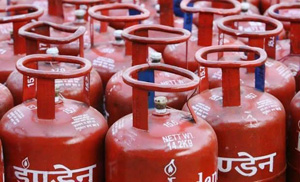New Delhi, Aug 30: After providing LPG in easy-to- carry 5-kg cylinders, the government is planning to launch 2-kg bottles at local kirana stores even as it introduced online booking of new connections for subsidised cooking fuel.
LPG is traditionally available in 14.2-kg cylinders, which are not very convenient to carry and its cost at Rs 418 is considered high for poor and rural population.
A 5-kg cylinder priced at Rs 155 was introduced in October 2013.
"We are now planning to introduce a 2-kg cylinder that can be easily carried... this will be particularly beneficial for the rural people and poor who cannot afford to pay the price of a 14.2-kg or even 5-kg cylinder," Oil Minister Dharmendra Pradhan said here.
To begin with, the penetration of 5-kg cylinder will be increased. New subsidised connections of 5-kg cylinders in rural as well as far flung areas will be issued in first place.
Pradhan was speaking at the launch of online booking of LPG connections.
"Consumers can now book a new connection online. It will be verified within 48 hours and a person from the nearest LPG agency will deliver a new connection at the door-step in next 3-4 days," he said.
He said the online booking will end hassles customers face in running to gas agencies for getting a new LPG connection. Already, a refill can be ordered online.
The 2-kg cylinder will cater to the LPG requirements for all sections of society including economically weaker families, students and migrant labourers who do not have proof of address due to acquiring residence on temporary basis. Such people can buy 5 Kg LPG cylinder at market price.
He also said about 25 lakh people have voluntarily given up subsidy on LPG, helping widen the reach the scarce fuel.
"On an average 50,000 people from all works of life are giving subsidy... the target set by Prime Minister Narendra Modi is one crore," he said.
Also, the scheme to pay subsidy directly in bank accounts of customers, called the Direct Benefit Transfer on LPG, has been recognised by the Guinness Book of World Records as the largest cash transfer programme in the world, he said adding it has eliminated "middle-men and black marketers" and ensured the fuel is delivered to right people.
Since the launch of DBTL, now named PAHAL, domestic LPG all over the country is sold at market price. Households get cash subsidy in their bank accounts to make good the difference between old subsidised rate and market price.
Out of 15.65 crore active domestic LPG consumers, 13.8 crore have joined the DBTL and are getting subsidy in their bank accounts.
The scheme was launched in 54 districts on November 15, 2014, and extended to all over the country from January 1, 2015 with a view to cut diversion and subsidised fuel being consumed by unintended segments like restaurants and other commercial establishments.
LPG subsidy payout from Union Budget in 2014-15 was Rs 40,591 crore as against Rs 52,231 crore in 2013-14, a saving of Rs 11,640 crore.
Pradhan said Modi had requested the well-off people who can afford to pay market price, to voluntarily give up their subsidy to help extend its reach to the most needy.
"About 25 lakh people have given up LPG subsidy voluntarily and against these 22 lakh new connections to the needy have already been issued," Pradhan said.
Assuming that each of these consume an average of eight cylinders per annum and at the average subsidy rate of Rs 200 per bottle, the saving amounts to about Rs 320 crore.
Presently, a household is entitled to receive subsidy to buy up to 12 cylinders of 14.2-kg each or 34 cylinders of 5-kg each every year. Cash advance is transfered into the beneficiary account on first enrolment and another instalment is given the moment it is used to buy a LPG refill.






Comments
Add new comment